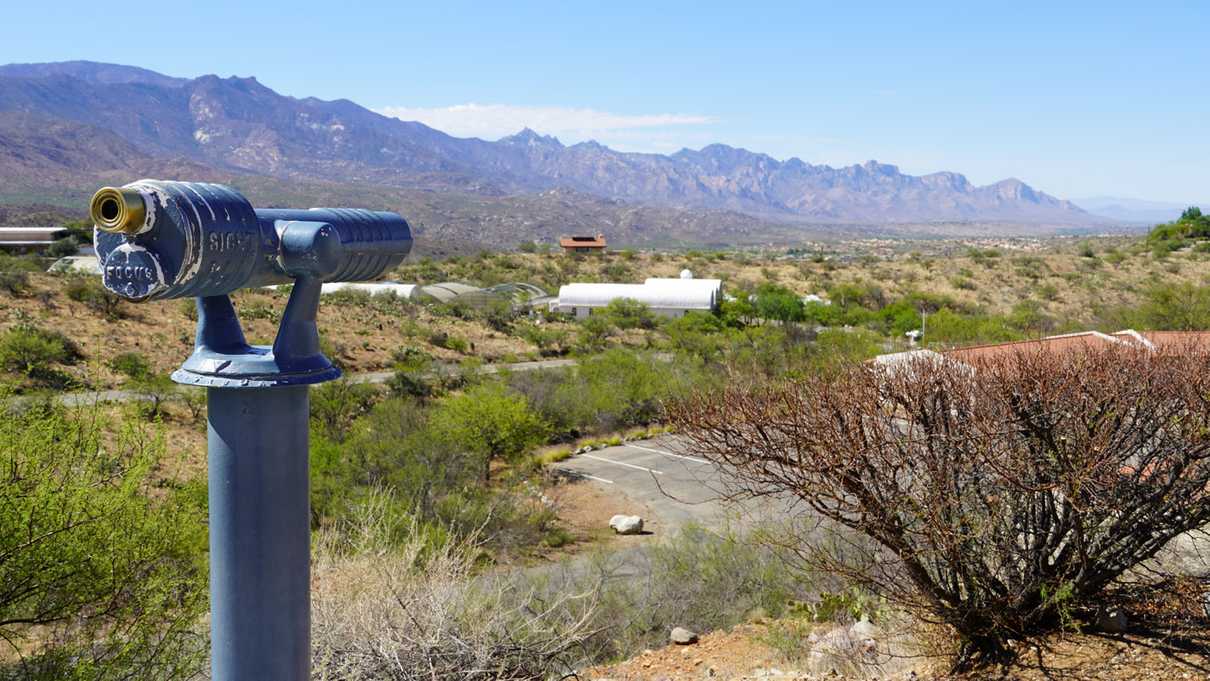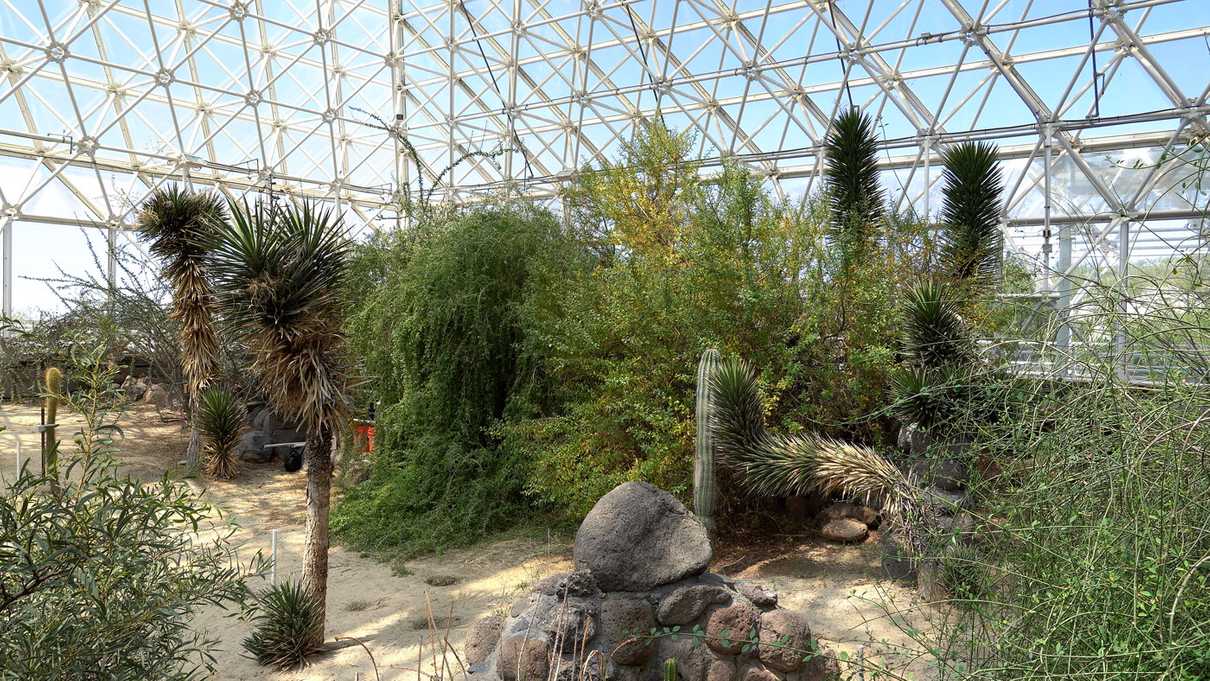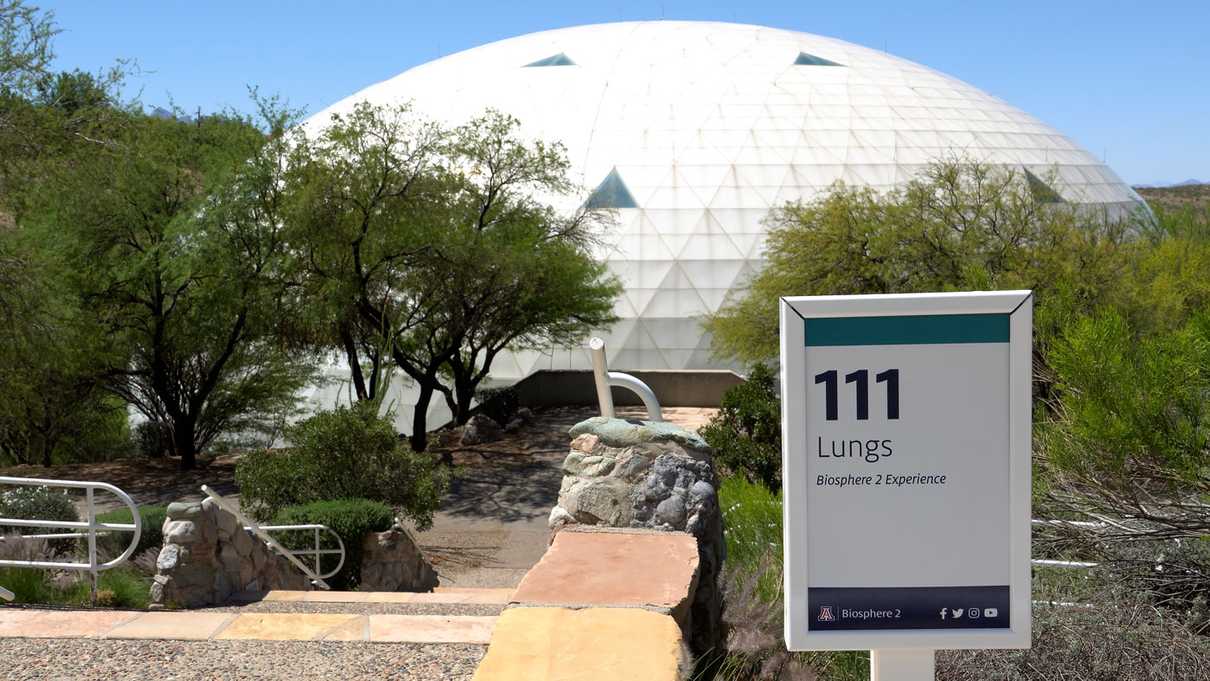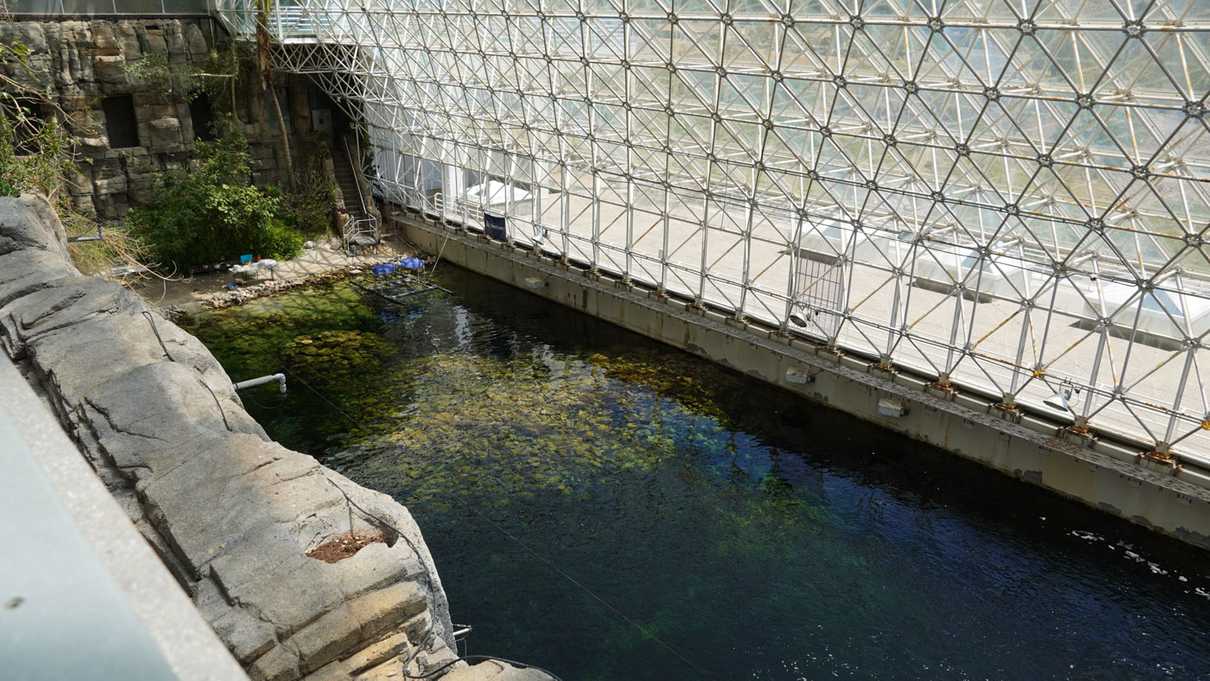The Biosphere 2 Experience | An Earth Science Experiment in the Desert
Located in Oracle about 26 miles north of Tucson, Arizona, Biosphere 2 was completed in 1991 to prove the possibility of supporting life in outer space through closed ecological systems replicating Earth’s biosphere.
Two closed-system experiments took place over time, however, did not prove to be as successful as first thought. With the buildings in jeopardy of demolition, the University of Arizona took full ownership of the property and today it is open to the public with occasional research projects and science camps still taking place.
Throughout the tour, one will walk through an orchard, a tropical desert as well as marsh, thorn scrub, savannah, ocean and rainforest areas. Not currently included in the self-guided tour (as of May 2021) are the lungs and the ocean viewing gallery. If you get a chance in the future to visit these exhibits, they are fascinating and definitely worth your time!
The Lungs
Despite the name, the two lungs at Biosphere 2 serve no purpose in exchanging air from within or outside the facilities. Two large concrete slabs are suspended from each ceiling attached to a rubber seal. As temperatures vary from day to night within the desert, the pressure inside the buildings fluctuate. To prevent the need to exchange air outside, the slabs will rise and fall to maintain an even air pressure within.
The Ocean
The Ocean at Biosphere 2 is a 700,000 gallon tank utilized for oceanic research. When originally built, the tank contained a coral reef and dozens of fish species, however, much of that died off after coral acidification experiments were conducted by Columbia University. What resulted is much like what our own oceans could look like with rising water temperatures. Today the University of Arizona has plans to replicate the Sea of Cortés while still continuing research on coral reefs.



